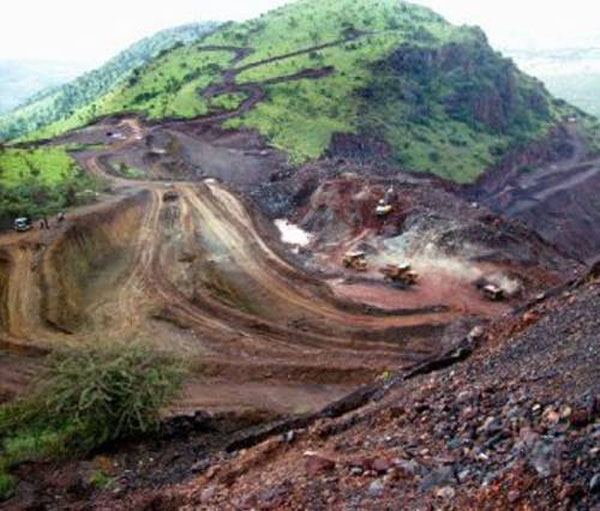The Supreme Court judgment for cancellation of 49 iron ore leases in Karnataka on charges of rule violations may not have any bearing on fate of Odisha mines, also in dock for several rule violation, as the nature of crimes are different, said a state government official.
“The SC verdict to cancel leases of category C mines (which have mined 10 per cent beyond lease area) was justified as they were carrying on operation without any forest and environmental clearance. In Odisha, the situation may not arise as the government has already taken so many steps,” said Deepak Mohanty, director of mines.
About 50 mines, out of 186 iron and manganese ore mines in the state, are now operating with many miners halting their operation due to lack of statutory clearances when the government clamped down on them following media exposures on illegal mining activities.
“The Supreme Court verdict made it clear that there will not be any lease cancellation in Odisha as no miners went beyond lease area here to excavate the minerals. Whatever irregularities have been there in Odisha were related to excess raising of ore and these have been regularised after payment of royalty,” said Prabodh Mohanty, spokesperson for East Zone Miners Association (EZMA).
The miners and the state government are awaiting report of Shah Commission, appointed for inquiring illegal mining of iron ore and manganese.
Out of all the working iron ore mines in the state, 10 mines have valid mining leases, while the rest are working under deemed extension provision. The provision allows miners to operate the mine even after lease expiry pending approval of renewal.
Despite the closure of many mines, iron ore output of the state was above 60 million tonne till 2010-11. It has been declining since second half of 2012.
Though the state government had put on cap on iron ore output at 52 million tonnes in areas having high production potential, it never got a chance to implement the order as production suffered at many large mines due to several restrictions imposed by the government, poor demand and other factors.
“I do not think the total output would have gone beyond 50 million tonne for 2012-13,” Mohanty said.
In October 2012, the state government came out with an executive order, which restricted miners awaiting second and subsequent lease renewals to limit production as per their captive need. The order affected mining output of Aditya Birla Group-managed Essel Mining and other small miners, who did not have any end-use industry.
Later, these miners went to the Revision Authority of the Union mines ministry and got stay order against the state government resolution, which helped them resume operation.
After October order, the state government came out with another notice, directing miners to reserve at least half of their monthly iron ore output for local steel industries. Many miners complained that since steel units were unable to lift the reserved quantity, it created space crunch at mining sites due to piling up of unsold stocks.
The state government, later, allowed miners to carry forward monthly reserved quota to next month, which helped miners to increase production efficiency.
Besides, mining activity was halted in key areas several times in the previous fiscal during the Shah Commission visits and because of truckers’ strike. As a result of the hiccups in iron ore production, Odisha missed its mining revenue collection target by 6.5 per cent in 2012-13. The revenue, which largely comprised of iron ore royalty charged at 10 per cent of selling price, stood at Rs 5,352.94 crore in 2012-13 as against a target of Rs 5,700 crore.

